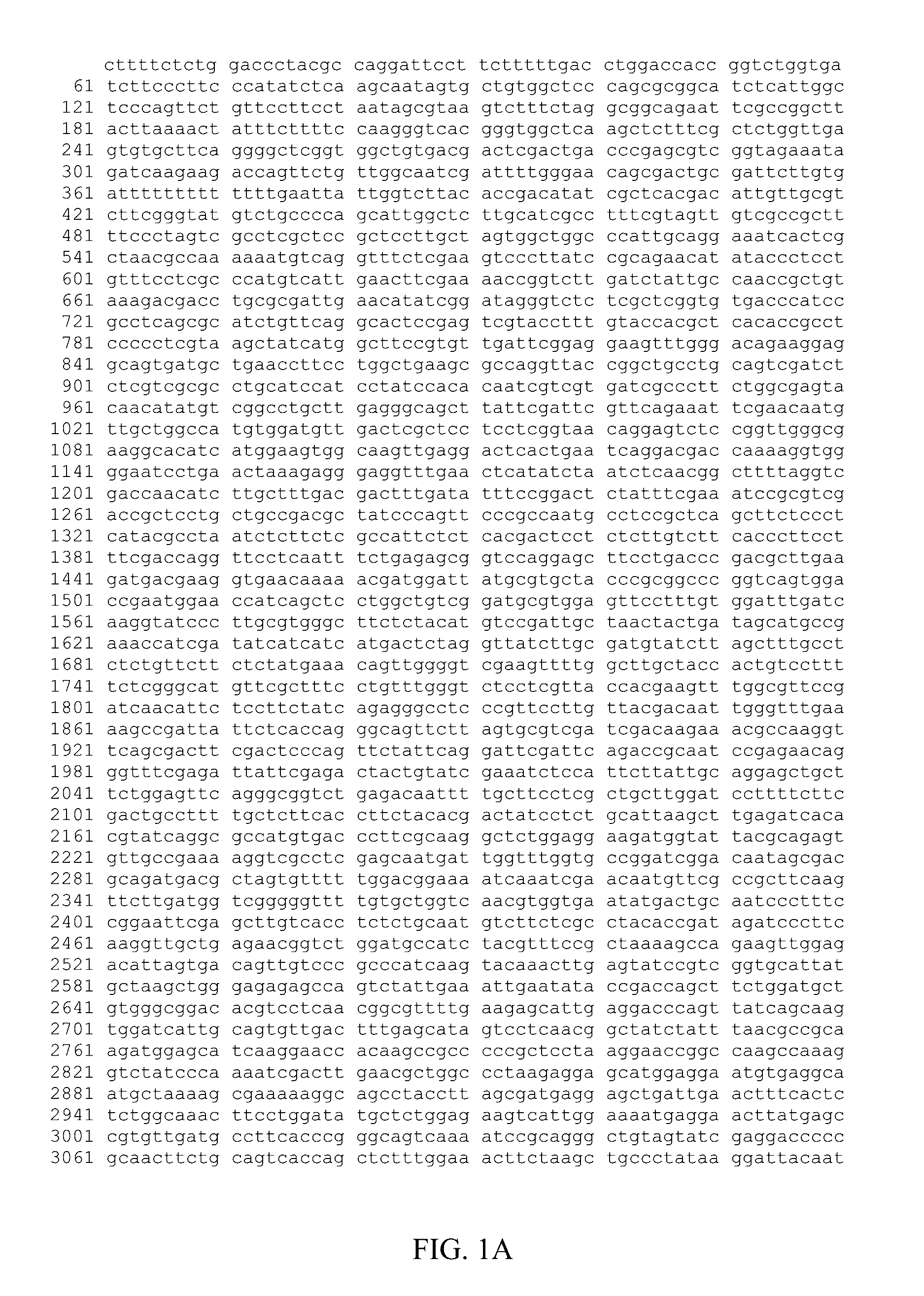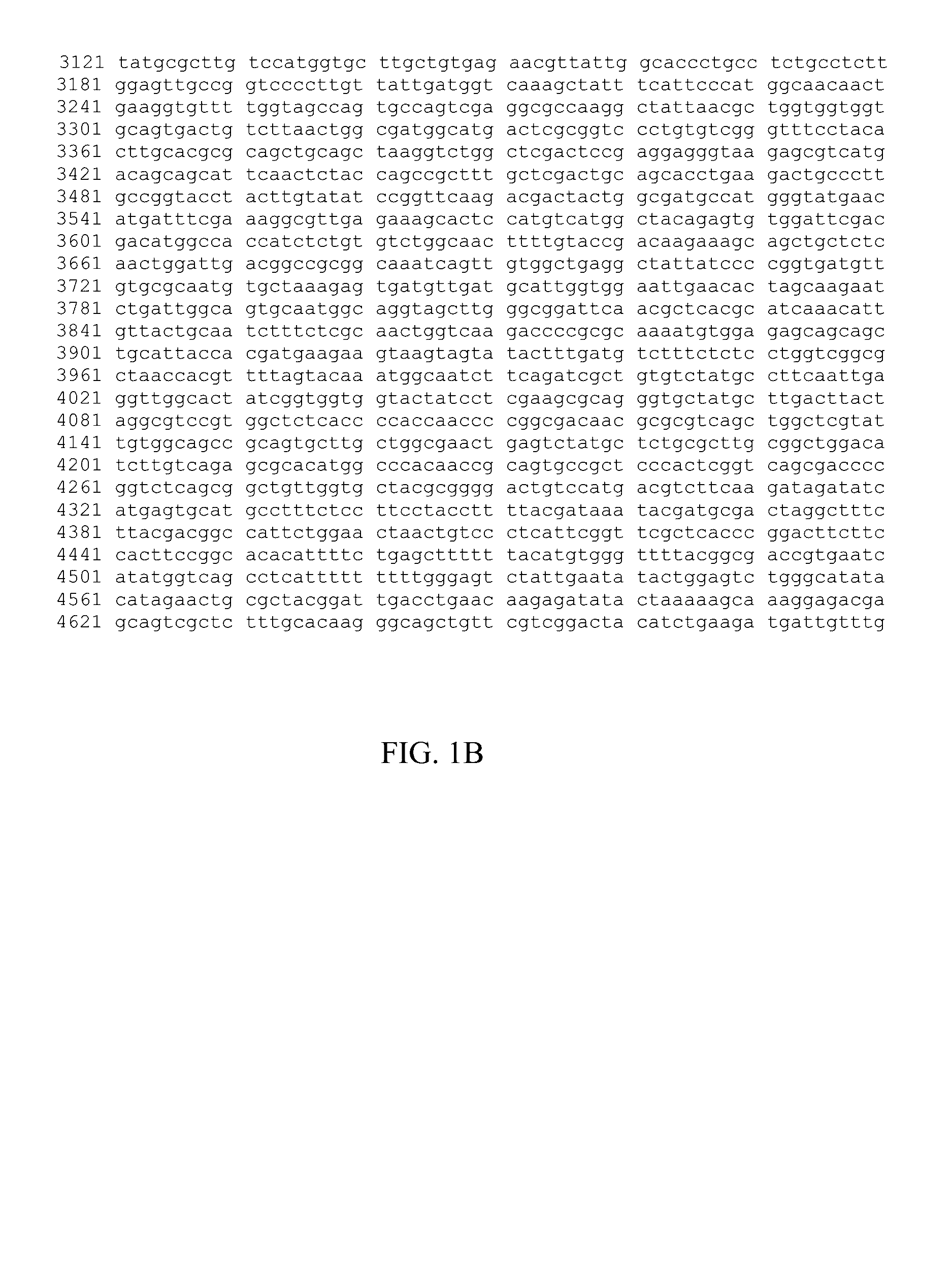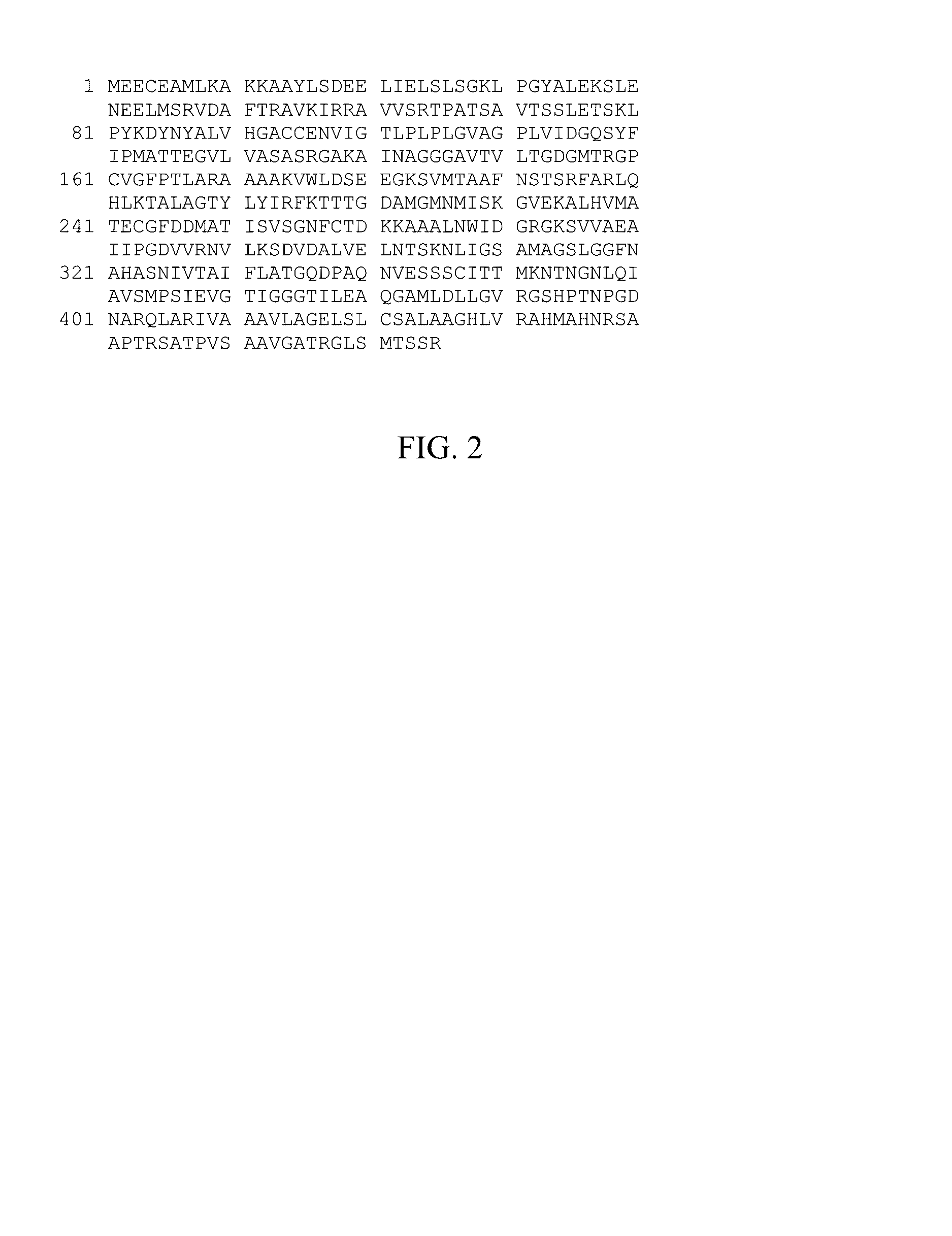Transgenic guayule for enhanced isoprenoid production
a technology of guayule and guayule, which is applied in the field of transgenic guayule plants, can solve the problems of increasing the price of natural rubber, the inability of airplanes to safely land with tires made of synthetic rubber, and the potential shortage of users of natural rubber, so as to increase the resin content, increase the amount of rubber, and increase the effect of rubber
- Summary
- Abstract
- Description
- Claims
- Application Information
AI Technical Summary
Benefits of technology
Problems solved by technology
Method used
Image
Examples
example 1
Results for Example 1
In Vitro Plants
[0144]The transformation plasmid pND4-HMGR(tAN) was constructed with a modified binary vector (pND4) known in the art (see e.g., Dong et al. (2006) Plant Cell Rep 25:26-34) and the HMGR gene from Aspergillus nidulans containing only the 465 amino acid catalytic domain driven by a constitutive promoter (potato Ubiq3). The resulting truncated HMGR1 plasmid construct pND4-HMGR(tAN) is shown schematically in FIG. 3; the T-DNA sequence is in FIG. 1A and FIG. 1B. The BAR gene driven by a double 35S promoter was used as a marker gene for Glufosinate resistance selection.
[0145]Agrobacterium-mediated transformation of an advanced homozygous inbred line of the AZ-2 cultivar yielded five independently transformed lines. Overall transformation efficiency of this plasmid into guayule using the method described was ˜3%. PCR results (FIG. 2) for four of those lines clearly indicate the presence of the HMGRtAN gene inserted into the in vitro plants. As an early i...
example 2
Results for Example 2
[0169]Guayule plants subjected to Agrobacterium-mediated transformation in vitro using the target plasmids were grown out on Glufosinate selection media; the presence of the transgenes was confirmed by PCR. Following cold treatment, the extractable content of terpene resins and sterols (acetone extract, see e.g., Schloman et al. 1983, J. Agric. Food Chem. 31, 973-976) and natural rubber (cyclohexane extract) was determined gravimetrically (see Methods). Results from extractions appear in Table 6 (for P427, constitutive promoter) and Table 7 (CBF2P, cold-inducible promoter).
[0170]
TABLE 6Plant extracts, determined gravimetrically by ASE, for vectorcontrol (PND9) and genetically-modified (constitutive P427 promoter driving HMGR + FPP) guayule plants subjectedto cold treatment (25 C. day / 10 C. night) for 77 days in vitro,following establishment from shoot tips.% Dry% DryWeightWeightConstruct,extractextracttransformation date eventSolvent(avg)(stdev)PND9, 5 / 13 E (con...
PUM
| Property | Measurement | Unit |
|---|---|---|
| temperatures | aaaaa | aaaaa |
| Tm | aaaaa | aaaaa |
| temperature | aaaaa | aaaaa |
Abstract
Description
Claims
Application Information
 Login to View More
Login to View More - R&D
- Intellectual Property
- Life Sciences
- Materials
- Tech Scout
- Unparalleled Data Quality
- Higher Quality Content
- 60% Fewer Hallucinations
Browse by: Latest US Patents, China's latest patents, Technical Efficacy Thesaurus, Application Domain, Technology Topic, Popular Technical Reports.
© 2025 PatSnap. All rights reserved.Legal|Privacy policy|Modern Slavery Act Transparency Statement|Sitemap|About US| Contact US: help@patsnap.com



